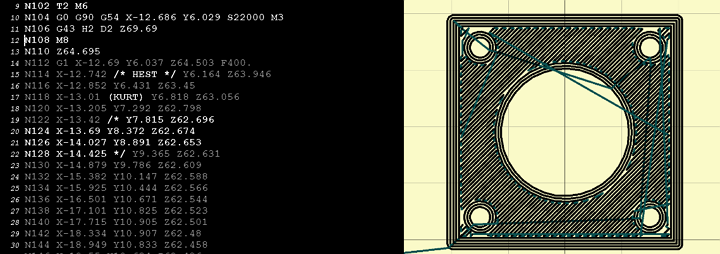“G-code” is essentially a common name for the single most widely used numerical control programming language, and it’s also known as “G programming language.” It was developed to guide computerized machine tools and defines instructions about which toolpaths should be followed, and it’s ubiquitous in additive manufacturing methods like 3D printing.
G-code has now become a main standardized version of such instructions and it was codified by the Electronic Industries Alliance in the early 1960s.
In 3D printing applications, G-code files are exported from slicer software and they contain a list of commands which the printer reads and executes to print a 3D model.
Generated G-code commands define the horizontal layers – slices – of a given 3D model. The resulting commands include user- and printer-specific settings which make the code itself difficult to modify for various printers, and modifying the original model using the code is difficult as well.
MXD was founded in 2009 as, initially, a gaming studio, and taking advantage of the group’s tech strengths, they soon reached out to the maker community with a series of tools to simplify the process of creating 3D printable content through the MXD3D wing of the company. They’re the creators of 3D printing technology such as Gameprint and MakePrintable.
Now the team at MakePrintable have created their G-code Reverser.
“Our Reverser,” they describe, “interprets the G-code, and collects the details and data needed from the commands, then it regenerates the 3D model which represents the outcome of the printing process using the respective G-code file.”
The makers say their software lets users simplify changing various settings and targeting other printers.
“Power users and 3D designers would get the chance to modify the model once more, as the outcome of the Reverser would be in .OBJ or .STL formats, which means they can import it into 3D editing software and start with their editing,” says Mohammad Ashqar of MakePrintable.
Ashqar says that as filament materials have different behaviors – and thus require different G-code settings – altering the G-code to use a different material and regenerate using the original 3D model will be simplified with G-code Reverser as well.
You see more information about G-code Reverser here.
Would you find a tool like G-code Reverser useful in your day-to-day 3D printing activities? Let us know in the G-Code Reverser forum thread on 3DPB.com. Check out the video below illustrating a quick guide to the G-Code Reverser.



Subscribe to Our Email Newsletter
Stay up-to-date on all the latest news from the 3D printing industry and receive information and offers from third party vendors.
You May Also Like
3D Printing Unpeeled: Wind Turbines, Probiotics and Lenses
TPI Composites, ORNL and Ingersoll Rand are working to make wind turbine tooling segments that can be 18.3 meters long. These elements also include resistive wires that help keep the...
3D Printing Unpeeled: Digital FDM Filament for Functional Gradients
Just published in Nature, a paper by a Seoul National University team looks at “3D printing with a 3D printed digital material filament for programming functional gradients.” Sang-Joon Ahn, Howon...
3D Printing Unpeeled: $5000 Cold Spray 3D Printer, Roland DGA & Living Materials
The AeroForge is a $5000 cold spray metal printer for copper made by a student team at Rice University. In a paper for ACS Central Science a team from Nanjing...
3D Printing Webinar and Event Roundup: April 28, 2024
In this week’s 3D Printing Webinar and Event Roundup, the Ceramics Expo is taking place in Michigan, Stratasys continues its advanced training courses, and SPE is holding a Polymer Characterization...

































